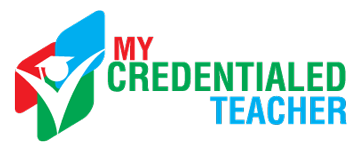Teacher Profiles
Below are a few of our teachers' profiles.
Ms. W. - classroom teacher since 2003
Describe your educational training and experience.
I have my law degree from the University of Frankfurt,Germany; teaching credential from New College of California, San Francisco; post-graduate classes in education from the University of San Francisco. Taught 3rd, 4th, 5th, 6th Grade. Classroom teacher, ELD instructor, as teacher leader I participate in district and school wide curriculum development with a focus on the implementation of the common core curriculum. Currently a National Board Candidate for Literacy: Reading - Language Arts.
Describe your educational training and experience.
In a one-on-one tutoring situation the skills and concepts will be taught within a context of high interest for the particular student. A variety of teaching modalities that best match the concepts and skills to be learned include modelling, guided practice, use of hands-on-manipulatives and visuals, as well the use of a game format to practice skills. I greatly enjoy to create imaginative and engaging "out of the box" lessons that will spark a student's interest.
How do you measure student progress or address obstacles?
An initial diagnostic assessment will provide a tool for understanding what skills and concepts the student lacks. Teacher and student will set clear short term and long term learning goals based on the identified gaps and regularly discuss the progression towards the expected goals based on the student's work samples. Quizzes, short tests, writing samples, analyses of running records of the student's reading, discussions to probe the conceptual understanding, and regular "problem of the day" tasks ( in math) will elicit evidence of growing understanding or the need for reteaching.
Ms. N. - classroom teacher since 1996
Describe your educational training and experience.
I have my Master's in Education (M.Ed.) from Smith College in Northhampton, MA. My experiences within education include: classroom teaching, instructional coach, data coach, principal, reading intervention specialist, ELD instructor and private tutoring.
Describe your educational training and experience.
As a one-on-one tutor, I attempt to provide direct instruction on the content the student is learning followed by guided practice eliciting responses from the student. This allows me to assess their competency and learning preferences.
How do you measure student progress or address obstacles?
Student progress is generally indicated by improvement in school. Within each individual tutoring session I will provide some independent practice to measure progress and make note of material that may need to be re-taught. If there are obstacles I will present the material in a new manner that may be more accessible to the student.
Trust that you will be getting the best teacher for your child!
Mr. R. - classroom teacher since 1974
Describe your educational training and experience.
I majored in mathematics and got my teaching credential at UC Berkeley. I have taught secondary mathematics for over 42 years. I have taught at a comprehensive high school, at a Charter school, and at Juvenile Court Schools and at local math circles.
Describe your educational training and experience.
I would try different approaches including visual and tactile aids, problem solving or repetitive practice, always assessing the progress. I emphasize deep conceptual understanding. For example, I would want the student to know why the Pythagorean Theorem is obvious, not just know how to prove it.
How do you measure student progress or address obstacles?
I would usually measure progress by assigning tasks for the student to complete and watching closely as they attempt to do so. I would address obstacles by reviewing necessary prior knowledge and using the approaches mentioned above.
Ms. H. - classroom teacher since 1998
Describe your educational training and experience.
I hold a Bachelor of Arts in English, a Master of Arts in English and American Literature, and a Master in Library and Information Science.
I am currently a middle school teacher-librarian in San Francisco. I have also taught writing and English in middle school, high school and college.
Describe your educational training and experience.
I assess a student's learning style through the student's behavior and samples of their work. I've had great success in teaching through the use graphic organizers and breaking assignments into smaller, more manageable steps. I'm inspired by the work of educators Kate Kinsella and Carol Jago.
How do you measure student progress or address obstacles?
I measure the student's progress through their ability to comprehend and accomplish their assignments, as well as their grades from their classroom teachers. I address obstacles by teaching the student in a variety of ways until I can find what is most effective for that student's learning style. Consistent and daily practice of skills is usually a large component of raising a student's grades and helping them achieve success in school.
Ms. E. - classroom teacher since 2013
Describe your educational training and experience.
I have a MFA in creative writing and my credential in English. I volunteered both in the classroom and as a tutor before I started teaching full-time in my own classroom.
Describe your educational training and experience.
Even though I work with many kids in the classroom, I also take time to work one on one with students and know that students have different ways of learning. After getting to know a student I am able to assess whether they are visual learner, like to talk things through before they write it down, or need more structure in their learning. I always scaffold my teaching so we build on our learning, and students feel ready for the next step.
How do you measure student progress or address obstacles?
To me progress can mean many things. I like to look at effort and motivation when it comes to learning as a sign of progress, but also how confident the student feels and tackling concepts without too much support. Obstacles are natural and they make sure students know that and try to help them become comfortable in those spaces where they feel challenged.

